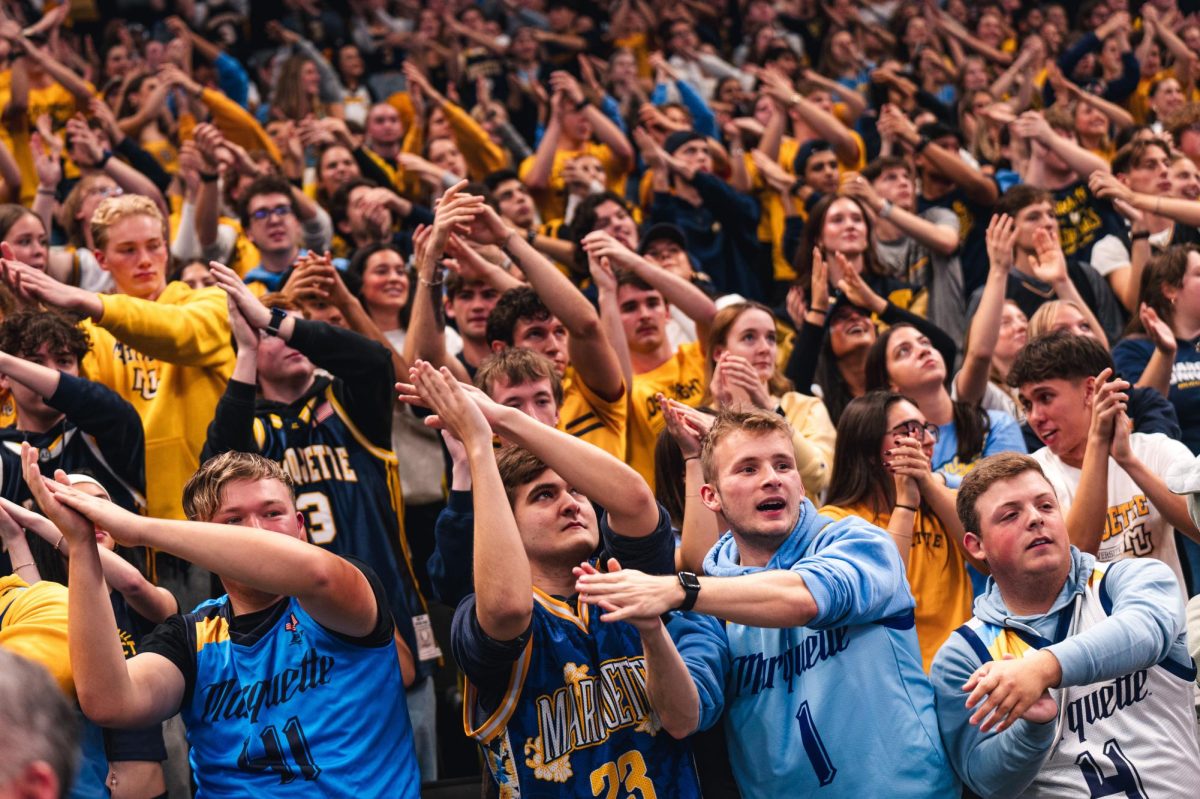As week one of classes ends, week one of college football begins. For most American universities, this means busy Saturdays filled with cheering, tailgating and bonding. Marquette University differs from these universities during this time of year because it has not had a football team in more than 50 years.
Mainstream media portrays a close relationship between football and the college experience through movies, television and books, so much so that now it seems almost impossible to not think about football on a Saturday afternoon in fall.
College football culture is so influential that it can even have an impact on where students decide to go to college. The university recently released the Class of 2023’s enrollment statistics, which showed that enrollment at Marquette was down from last year. This comes as a shock as the enrollment statistics for the Class of 2022 were record-breaking.
What could have led to this diminish and more importantly, what can bring Marquette’s enrollment numbers back up? What is the university lacking? Could the addition of a football program potentially increase enrollment?
Founded in 1892, the Marquette University Golden Avalanche, the university’s first football team, achieved a .552 win percentage and appeared in the first Cotton Bowl. Despite all of this success, failings in later years caused Marquette University to cut track and field and football after both of those programs had lost a substantial amount of money the previous years, as football cost the university over $50,000 in 1959. Since then, the university has brought back its track and field program.
Hearing that Marquette had a football program in the past is shocking to most students who, including myself, had never heard of a Marquette football program. Marquette is so well known for its basketball program that a lack of a football team goes overlooked, and most students who follow athletics would agree that college basketball will always be second-ranked to football in both popularity and revenue.
Once Marquette dropped football, other smaller universities followed by ending their programs as well, such as Pepperdine University in California. Marquette’s lead may have been extremely influential at the time, causing other universities to see Marquette’s experience as a cautionary tale and pull out of their programs before they lost more money. These universities, however, did not include a few of our BIG EAST counterparts as Villanova, Butler and Georgetown still have programs in the Football Championship Division. Marquette, however, doesn’t even have a club team.
When asked about the possibility of a football team, University President Michael Lovell said in a 2014 Reddit Q&A that he didn’t believe the university could support a football program. Lovell said the university didn’t have the resources necessary for student scholarships, fields or a coaching staff.
At a glance, this makes sense. Marquette does not appear to own enough land required for a football field, stadium or parking lot. Additionally, finding and hiring a new coaching staff would most likely cost hundreds of thousands to millions of dollars, as the average head coach of a Division I football program’s annual salary in 2018 reached just over 1 million dollars, according to USA Today.
Every university with a football program, however, must consider the costs and benefits. In the majority of cases, the investments are returned. With merchandising and ticket sales, the university could generate a substantial amount of money. According to a 2017 Business Insider article, 127 Football Bowl Subdivision universities generated a combined average annual revenue of nearly 32 million dollars. Basketball, however, annually generated just over 8 million dollars.
The addition of a football program could also help the Milwaukee community. Not only would the construction of the football field and stadium create jobs, but it would bring in revenue for many Milwaukee businesses.
If you need any proof of how well stadium-neighboring establishments do on game days, take a walk around Fiserv Forum an hour before a Bucks game. Restaurants are filled with happy fans and shops are filled with people looking to buy team apparel before the game starts. This would also contribute to the university’s revenue, as vendors cannot sell copyrighted Marquette trademarks or likenesses without a license.
While the initial costs of a football team and its necessities might be unappealing to university officials, statistically speaking it is well worth the investment. And as time goes by, the necessary funding for these projects only increases.
It can also be predicted that the majority of Marquette students who go to athletic events would enjoy having a football team.
At the end of the day, it is the university’s decision. If it agrees, the essence of school spirit lives on through another sport. If it disagrees, a piece of Marquette history will remain in the past.













John Fargnoli • Sep 6, 2019 at 3:30 pm
I do not understand why there has not been more support to bring back football. Start with club football and see what happens. Start a fund raising effort to cover start up costs. I would willing to donate to support this effort.
George Schwabe • Sep 4, 2019 at 7:57 am
I’d love to see it. Scholarships can be partials only, or academic/ need based. Do not have to compete at D1. There are alternatives.
Go Warriors
Christopher Stahl • Sep 3, 2019 at 8:36 pm
I would definitely back such an endeavor. The lack of a football program is the one negative that has always bothered. Looking back I don’t if I would go somewhere else but I would consider it.
Cost and land will end this pipe dream.